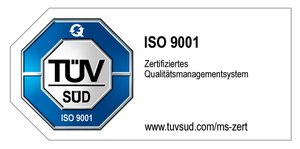Flatness measurement
The flatness measurement is an important part of the control for compliance with the (see → )form and position tolerances of a measured object. In the case of flatness, this is a shape tolerance specifically for a surface. The limits of the tolerance are formed by two imaginary surfaces that are parallel to the ideally generated surface. If the real generated surface intersects at a point with one of the two parallel surfaces, the tolerance is exceeded. The flatness of a surface can be disturbed by various structures such as waves, valleys and mountains, grooves and scratches, cracks, bumps, pores or roughness. Numerous methods exist for measuring flatness, using tactile or optical methods to accurately measure both extremely small and extremely large areas. Thus, tactile can be used with stylus techniques or 3D coordinate measuring techniques, or optical via laser scanning, white light interferometry, confocal microscopy or laser point measurement techniques. The choice of measuring equipment depends on the material properties and size of the measured object, the desired level of detail of the measurement and other factors.
We find the perfect solution for your project.
Contact us if you have questions to our services in the area of 3D metrology. We are looking forward supporting you in your success.



